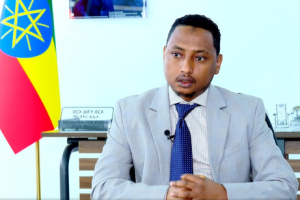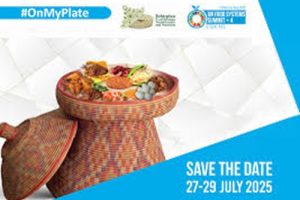The church school system has been the instrument that has preserved the traditional learning of Ethiopia and conveyed it faithfully to succeeding generations. The priests and Church scholars who are the bearers and propagators of traditional learning have themselves been formed in the church school system. With the steady expansion of modern secular education in the present century, church schools still play an active part in the Ethiopian educational scene.
The church school system, which is one of the oldest in Christendom, originated in the Aksumite Kingdom with the introduction of Christianity about the 4th century. In the course of the centuries the school system has grown and changed in many ways.
According to various documents, the present form of the church schools evolved from the 13 to 16th centuries when the literature of the Church had reached its peak. The schools have in this period confined their educational activities to glorifying the products of past centuries and conveying these to the coming generation.
The church school system has Nebab Bet (Reading school), Qedasse Bet(Liturgy school), higher school namely Zema Bet (Music school), Quene Bet (Poetry school) and Metsehaf Bet (Literature school) divisions.
The traditional school of Ethiopian Orthodox Church is full of spiritual and cultural heritages with tremendous spiritual songs better known as Saint Yared’s songs’ and has been used as center of learning in which the society depended on for their spiritual and secular life for centuries.
The church is the source of educational written systems. It provides educational service by Ethiopian Geez Alphabet, calendars and languages. Ethiopian Orthodox Church is the source of spiritual as well as modern educations.
According to documents, in Ethiopia writing began before the birth of Jesus Christ 1000 years ago. Because of this the church began to use writing commencing from the date the expansion of the religion. Therefore, Ethiopian Orthodox Tewahido Church has contributed most in the religious, social and education life of its people.
Through this system, the church has enabled to expand traditional church schools and modern for many years to transfer ancient education for the generation. It has played its role to expand the overall assets of the country through the established spiritual as well as traditional church schools. The current educational system has been profoundly molded by the past; having its own written language and literature it developed from very early days a tradition of ecclesiastical scholarship
The Nebab Bet, the Reading School or the “House of Reading” is the first stage of the traditional schools, where primary instruction is given. It found in all churches and monasteries, in a number of villages and in the compounds of well-to-do landlords. It is a one-teacher school, with instruction given by a priest or layman with church education.
Children start school between the ages of 5 and 7, when they are traditionally considered ready to learn. Both boys and girls and members of all ethnic groups and classes are eligible to enroll in church schools. The prime function of the Nebab bet is to teach children to read religious books, especially in Geez. Children master the 231 letters of the Geez syllabify, and are drilled in the art of good reading.
In urban centers and roadside towns the Nebab bet has a new function today. The modern school often accepts more readily in their primary grades those children who can already read and write.
The pupils who complete the Nebab Bet join a Qedasse School, one of the schools are the liturgy. A teacher specialized in Qedasse or the Mass is to be found in practically all the main churches.
The higher schools of the church are an extension of the Nebab and Qedasse bet.
The leading teachers and scholars of the church, who are known as Debtera, are trained in the higher school.
A student of the Nebab Bet or Qedasse Bet, who would like to join the higher schools, usually leaves his parents and joins the wandering students who travel from parish to parish and form monastery to monastery. The main courses of study are in church music, church poetry, and religious literature, each divided according to content of instruction.
In all these schools the students must learn the material by heart.
The training challenges the memory of the child rather than leading him to think. In spite of the monotony of the learning and teaching methods and the exacting length of time, the students show surprisingly high morale. There are of course reasons for their diligence. The wandering student expects a high position in the church hierarchy. Qene Bet is parts higher school enables students to master to master in order to be able to compose the Qene poems which are sung in different sections of the liturgy of the church or used to celebrate church and state ceremonials.
The students begin by learning first the simplest Qene form known as the Gubae Qana which is epigram composed of two rhyming verses.
The Qene lessons usually start in the afternoon or in some places early in the evening. The place of instruction is usually a communal hut near the teacher’s dwelling known as the Mahber Bet, or simply in the open or under a tree.
During the evening the student endeavors to find the proper music to fit the Qene model he is going to compose; since all Qene has to be sung, his Qene piece must be suited to a corresponding musical form.
Metsehaf Bet
This is the general term for the School of Commentaries composed of four branches. The first type is known as Beluy. The 46 Books of the Old Testament are studied and commented upon. The second branch is the Haddis, a specialized school on the commentaries of the 35 Books of the Ethiopian New Testament. The third branch is Liqawent, which presents studies and comments on the various writings of the Church Fathers, e.g. Saint John Chrysostom, Qerlos and others. The canon laws (Fetha Negest) as well as the calendar calculation (Bahre Hasab) are also studied here. The last branch of the Metsehaf Bet is the Menekosat, the School of Commentaries on monastic literature.
In these specialized branches the students learns the traditions of the Church, theology, Church history and laws, through the interpretation of the various individual writings.
The expressions are vividly illustrated with parables, analogies, proverbs, and popular wisdom. Parallels are quoted from the history of the country while interpreting the passages on the Holy Land. Generally, the approach to reality is well mixed with mythical attitudes.
These schools of commentaries are not to be found everywhere, but in large churches, Debre, and in monasteries, Geddam, where extensive libraries and famous teachers are to be found. It may be that church schools as a whole will take on a new impetus and play an important role in raising the general level of education of the clergy in the future.
Currently, in the urban centers and roadside towns the elementary church school, the Nebab Bet is flourishing as an institution to prepare pupils for Government schools, teaching young children literacy in Amharic. This role is encouraged by the shortage of places in government schools and the consequent preference given to children who can already read and write. Such schools may perhaps play a wider role within the context of the national campaign for literacy and provide more instruction for adults as well as young pupils.
The Church is fully aware of the necessity to train its own future leaders in such a way that they will fulfill their role in modern society. Modern theological colleges exist which combine traditional studies with the broader curriculum demanded in the twentieth century. A number of theological students have also progressed to further advanced studies abroad. In other words, the church is successfully bridging the transition from strictly traditional scholarship to a new, dynamic era where traditional learning and modern education will blend together to ensure the continuity of Ethiopia’s Christian heritage in the setting of modern world.
The Ethiopian Herald Jun 18, 2020
BY TSEGAYE TILAHUN





